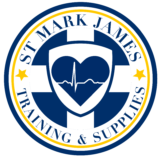Discoid eczema is an uncommon form of eczema characterized by coin-shaped lesions or sores on the skin. These lesions usually start on the lower legs, rear surfaces of the elbows and hands. The sores are intensely itchy with the tendency to recur and vary in size and number. The condition often affects middle-aged and older males.
https://www.youtube.com/watch?v=1u5D-wPJqSo
Although the exact cause is still unknown, discoid eczema is associated to allergies. It is common among adults than children. Even today, there is no cure but there are various treatment options available. By following a specific treatment approach given by the doctor, the symptoms can be controlled properly.
What are the indications?
The symptoms of discoid eczema include the coin-shaped sores or lesions on the skin that vary in number. The lesions also vary in size from a few millimeters to centimeters. The lesions can be scaly and itchy and even ooze fluid, eventually causing them to become crusted.
Aside from the coin-shaped lesions or sores, the other common indications include the following:

- Itchy skin
- Redness, swelling or warmth
- Drainage of pus
- Scaly skin
- Skin ulcerations and infections
What are the causes?
Environmental factors
There are environmental factors that can trigger a flare-up of discoid eczema such as the following:
- Cold weather and dry air
- Being exposed to household irritants such as detergents, soaps, fabrics and cleaning products
- Being exposed to fumes or strong chemicals such as solvents, alkaline substances and acids
- Abrupt temperature changes
Common allergens
- Certain plants
- Fabrics
- Metals
- Workplace or industrial chemicals
Management of discoid eczema
Discoid eczema can be managed with a plan to alleviate the symptoms. The usual treatment plan includes avoidance of the specific triggers or irritants along with the application of a moisturizer for dry skin.
Oftentimes, the ideal treatment is to do nothing since even low-strength, over-the-counter products can worsen the condition. The itchiness can be reduced using moist dressings, anti-itch creams or lotions and drying lotions. In severe cases of inflammation, treatment using corticosteroids might be needed.
Lifestyle treatment measures
- Generous application of skin emollients
- Mild soaps to prevent and reduce flare-ups
- Reducing exposure to specific environmental triggers
- Utilizing a perfume-free moisturizer
Medications
- Antihistamines such as loratadine and diphenhydramine
- Oral corticosteroids for severe cases such as prednisone
- Topical corticosteroids
- Topical immune modulators
In some cases, phototherapy and topical tar preparations are part of the treatment.
